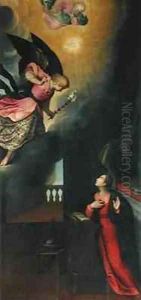Francesco Frigimelica Paintings
Francesco Frigimelica, also known as Francesco Frigimelica the Younger to distinguish him from his architect uncle, was an Italian painter and architect born in 1653 in Padua, Italy. His contributions to the Italian Baroque movement, particularly within the Veneto region, have been noted for their elegance and harmony, blending architectural and artistic elements seamlessly in his works. Frigimelica's artistic journey was deeply influenced by the cultural milieu of Padua and Venice, two cities known for their vibrant artistic scenes during the 17th and 18th centuries.
Frigimelica's training and influences are reflective of the period's artistic trends, drawing inspiration from prominent artists such as Luca Giordano and Johann Carl Loth. His works exhibit a mastery of light and shadow, a characteristic feature of the Baroque style, imbuing his subjects with a sense of dynamism and vitality. Despite being less known than his contemporaries, Frigimelica made significant contributions to the art and architecture of his time, working on various churches and villas, where his dual talents as an architect and painter were highly sought after.
Throughout his career, Frigimelica remained primarily in the Veneto region, where he executed altar pieces, frescoes, and architectural designs that reflected the transition from the Baroque to the Rococo style. His paintings, often characterized by their religious themes and allegorical subjects, were marked by a delicate use of color and intricate compositions. As an architect, his works contributed to the development of the Venetian villa as a key architectural form in the 18th century, blending functionality with aesthetic appeal.
Frigimelica's legacy, while not as widely recognized as some of his peers, remains significant within the study of Italian Baroque and Rococo art and architecture. His death in 1732 marked the end of a career that spanned nearly eight decades, during which he contributed to the cultural heritage of the Veneto region. Today, his works can be found in various churches and museums, offering insight into the artistic transitions of early modern Italy.
